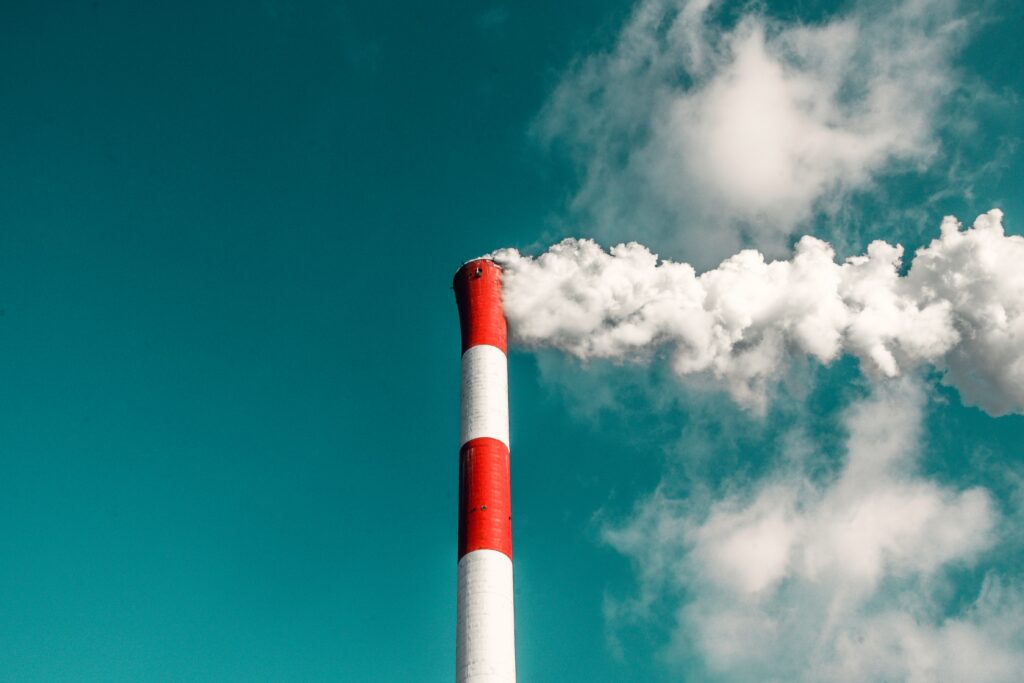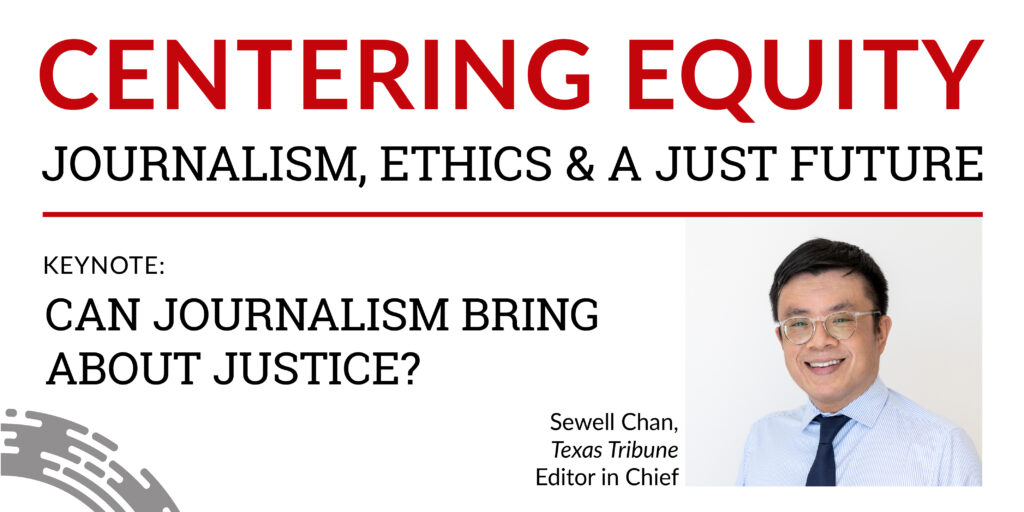
A Q&A on climate change coverage w/ Oxford Climate Journalism Network co-founder Wolfgang Blau
Wolfgang Blau, the co-founder of Oxford Climate Journalism Network (OCJN), started his career as a radio news presenter and news editor in Germany. After working for different German news media, he became a reporter in Silicon Valley, the editor-in-chief of Zeit Online, the executive director of digital strategy at The Guardian for the UK, US and Australia, chief digital officer of the global media company Condé Nast and then global chief operating officer and president international of Condé Nast. Since last year, he has also served as an advisor to the United Nations climate change division.
Throughout his career, Blau has been passionate about the environment and concerned about climate change. His extensive newsroom experience has also led him to an important but troubling observation: For various operational and cultural reasons, most newsrooms are struggling to integrate aspects of the climate crisis into their day-to-day reporting and do not realize that climate change will soon become journalism’s greatest challenge.
Blau began interviewing news organizations around the world about their climate journalism, hoping to detect patterns that could then lead to new ways of supporting the news media. Based on this research, he then developed and co-founded the Oxford Climate Journalism Network together with the Reuters Institute for the Study of Journalism at the University of Oxford. The network’s mission is to help journalists and editors develop their coverage of climate change.
We spoke with Blau about why climate change is so often not considered “news,” how climate coverage needs to be a part of all beats, about charges of activism in journalism and much more.
This interview has been edited for clarity and concision.
How did your experience in the newsroom lead you to creating the Oxford Climate Journalism Network?
The first phenomenon that intrigued me was how covering the environment and climate change was always considered an add-on, a supplement to the main publication and not an integral part of it. Second, in my experience, a lot of what is called climate journalism does not find great audiences by standard audience metrics. My third experience was at Condé Nast, where I was able to create roles for sustainability editors for various brands. I found it surprisingly difficult then to recruit journalists with the qualifications we needed. All these experiences led me to really want to understand why it is so difficult for the news media to cover climate change appropriately, given the importance and urgency of the climate crisis.
Then I started interviewing dozens of news organizations around the world and asking them the ever-same questions: Are you planning to expand your coverage of climate change? What are your challenges? Do you give special training to your staff? Are accusations against your team of being activists an issue? How did you organize your newsroom? Do you rely on your science desk or do you start a separate climate desk? Do you encourage all of your teams from sports to culture to cover climate change or only your climate specialists?
From these interviews and a structured survey, a pattern emerged of what was missing and how we could support the news industry.
Two working assumptions are driving us now at the Oxford Climate Journalism Network. One is that while you do need climate experts, meteorologists and climate scientists working within a news organization, you also need to raise the average climate literacy across all teams. This is similar to how newsrooms once had to increase their digital literacy across all teams. The second is that the climate crisis is not a topic that you can squeeze only into a science desk, politics or occasionally the business desk. The climate crisis is not just about science, politics or business but also changes the world of sport, food, travel, gardening, real estate and personal finance, to mention a few. It changes everything. We want all journalists to be able to competently and accurately add the climate dimension to the stories they are already covering, where that is relevant. Today, that climate dimension is still mostly missing from stories that really should have included it.
What are the biggest challenges climate journalists face?
If you speak with the climate journalists that are currently part of a science desk or dedicated climate desk, a key challenge for them is that they’re often being told there are other, more important topics to pay attention to than climate change. More often, it is the news desk that decides against giving their story premium placement during prime time.
This has to do with what is called the news value criteria. A news desk editor – I’ve been one myself for many years – tends to be flooded with potential topics and so they need a kind of mental filter or set of criteria for selecting the few stories they run and for rejecting all others. If you interview experienced news editors about what their news value criteria are, you often hear a combination of these filters or criteria: First, the story needs to be new. After all, it’s called ‘the news’ for a reason. To which you could say, well, climate change, isn’t really news. Climate change has been around yesterday and last year, and it will be around next year, so why run the story today? In many newsrooms, your story also has a better chance of making it into the news list if it describes something that happened in close geographic vicinity to where your audience lives. This proximity news value is why an accident in your neighborhood is more likely to make it into the news than a very similar accident in another country. Apply this to the climate crisis and you will notice how it is mostly regional extreme weather events that help the climate crisis make it into the news, while these extreme weather events are only the ‘breaking news surface’ of something much bigger. News topics also shouldn’t be so complicated that you need additional explainer pieces or explainer pages just so that your audience can even make sense of that one news story. Climate change is not a simple topic, though, nor a mono-causal story; it is fairly complex.
Many news organizations also have a preference for news stories with an event angle on a topic or a personalization angle on it. But again, with climate change there aren’t that many event angles, apart, of course, from the growing number of extreme weather events and the occasional climate summit or release of an IPCC (Intergovernmental Panel on Climate Change) report. This focus on events can have absurd consequences, though: Sometimes, when a big sheet of Antarctic ice breaks off, this event or incident becomes news, also because there are images to publish. But the more important event of a major scientific study being published about the Western Antarctic possibly reaching a tipping point barely makes it into the news because there’s no event attached to it. So, apart from extreme weather events and the occasional climate summit, climate stories often miss the event angle or the personalization angle, another helpful route for a topic to make it into the news list.
You are then left with another news values criteria, which is the public interest. Sometimes, a news story does not fulfill the most common news value criteria and – in the case, for instance, of election results – isn’t even news anymore but still makes it into the news list, simply because the story is considered vital to the public interest. Several chief editors believe that the public interest in climate journalism is much greater than what we thought in the past. There are a few news organizations, notably Agence France Presse, who are beginning to adjust to the climate reality and acknowledge in their news selection just how much coverage of the climate crisis is in the public interest.
It helps to understand here that the climate crisis isn’t just a topic but something more fundamental or systemic, if you prefer that word, in how it affects and changes every area of our lives, our economies and cultures. In that way, the climate crisis also affects or provides journalistic opportunities to every desk or vertical of a typical news organization, from news to culture to sport. Take real estate journalism, for instance. There are regions in the United States where it is getting difficult or prohibitively expensive to get insurance for the new house you want to buy because of the climate-related risks of sea-level rise, floods or fires.
So, instead of reading a story about climate change from the science desk, you could be reading a real-estate story, but – if done right – that story could include an informative, journalistically relevant component of climate journalism. To competently add such climate dimensions to your sports, health, real estate or travel journalism, your editors and reporters need to collaborate very closely with the climate experts in your newsroom. Often this higher degree of collaboration depends on the leadership skills of a newsroom’s managing editor or chief editor.
The second big challenge is the lack of climate literacy in most newsrooms. We expect a sports journalists, certainly the leader of a sports desk, to know the basic rules of how their country’s election system works. Just like you’d expect a political journalist to not be completely ignorant of your country’s most popular sports. In newsrooms, these things are considered general education. Typically, though, we don’t view climate literacy as general education yet. And I really mean the basics: What is the natural greenhouse effect and how does it work in broad terms? What are the main sources of CO2 and what does it do to the climate? What is the world’s remaining approximate carbon budget to keep global warming under 1.5 or 2 degrees? This kind of basic climate literacy needs to be established across all teams of a news organization so that a news desk editor or other editors across any desk can understand the relevance of a specific climate story or of a climate aspect within their own subject matter area.
Next, there are the organizational questions in a newsroom: should we set up a climate desk or should we just expand the existing science desk? Or should we pursue a ‘virtual hub’ approach where editors from all teams meet once or twice a week to discuss their longer-term story plans and potential climate aspects they may want to add to these stories.
These are all operational questions, as they either require budget increases or more management attention or both.
In many regions of the world, there is also the issue of missing data or a lack of access to relevant scientists who can help journalists make sense of climate research or climate-data.
Another very typical complaint, especially among younger climate journalists, is that they are often being accused of activism and of violating journalistic norms if they want to cover the climate crises more frequently than before.
Newsrooms typically know how to navigate ethical conflicts. A familiar question in many news organizations is how to detect and deal with potential conflicts of interests. As an example: What do you do as a journalist when you are being asked to write about a company that your spouse is working for or may own shares of? Especially the large news organizations have created editorial codes of ethics to help them deal with these day-to-day conflicts. Not many news organizations, though, have dealt with the question of how to delineate their journalism from activism, nor are they very transparent about their news value criteria, i.e. the criteria by which any given topic is deemed newsworthy or not.
How do you think news organizations need to deal with journalism/activism binary concerning climate journalism?
An important first step for news organizations would be to include the question of how to delineate between journalism and activism into their existing codes of ethics or codes of practice. An editorial code of ethics is a bit like a legal text in that it needs to have a high degree of abstraction and thus can’t possibly define or anticipate every possible real-life conflict that comes up. What such a code can give you, though, is a basic framework and a shared language to discuss practical conflicts as they come up. Just the process alone of drafting such an added paragraph on the delineation between journalism and activism can already help a newsroom become more aware of the issues, including the harm that can be caused by needlessly accusing climate journalists of being activists simply because they’ve expressed a high degree of urgency or concern about climate change
Also, when looking at how to delineate activism from journalism, a more instructive starting point is not to try to define what journalism looks like that is free from any element of activism – an almost impossible task – but to approach the question from the other end and to ask what the typical elements of activism are. This approach will allow you then to identify potential activism in your newsrooms journalistic output more easily: Activism is very monothematic and often focused on achieving one single thing, such as the change of a law or of a specific product. It is the nature of journalism in contrast to present a multitude of possible approaches to a given problem. Activism also needs to be highly repetitive in its messaging so that a campaign can reach its one defined target or milestone. Journalism in contrast can’t afford to be that repetitive.
Activism often tends to have a tonality of ‘us versus them’ and can be based on clearly defined group identities. Good journalism, in contrast, needs to be as inclusive as possible. It also comes with the nature of activism that an activist campaign is not keen on revealing logical contradictions or unknowns in its own line of arguments or demands, whereas good journalism ideally is transparent about what is yet unknown or contradictory in anyone’s proposals. Activism also tends to speak from a position of moral superiority, which journalism does as well at times, but shouldn’t.
Having said that, there is something else I must emphasize: While journalism and activism play different roles in society and should be kept separate, they are both needed and important. Journalism owes a lot to activism and journalists should not speak pejoratively of activism. Without the work of activists of past generations, we would have no freedom of speech, no right to vote and no freedom of the press. Activism and journalism are both valuable. They are just not the same. The fact that journalism itself often struggles to remain impartial does not mean then that we may just as well give up on the idea of impartiality and objectivity at all. The very act of striving for maximum objectivity, fairness, accuracy and transparency already creates a different culture and journalistic product compared to journalism that has given up on or disregards these ideals. With all our personal biases, different formative life experiences and backgrounds, we will never achieve being objective or fair, but the very act and practice of trying to do so every day is still the best we have got and is also what our audiences in many countries clearly prefer.
Solution journalism is often offered for making climate change news more popular. What do you think about that?
Yes, there is quite a lot of research available that shows how humans prefer to engage with threatening information if there is also a perspective provided on what could be done to address a danger or problem. Journalism’s primary duty, of course, is to report on the world as it is. But if this means to only report on problems, threats and risks without also reporting on what could be done to address these, then journalism is not doing its job either. Several institutions, such as the Solutions Journalism Network in New York, the Constructive Institute in Denmark and Germany’s Bonn Institute for Journalism and Constructive Dialogue all offer training for journalists on how to add constructive perspectives to their work.
Unfortunately, though, many journalists falsely assume that constructive journalism means to somehow sugarcoat reality. I think this is a misunderstanding and that we should make a greater effort to report on potential solutions and answers to the climate crisis. From the most recent Reuters Digital News Report, we know also that news avoidance is a growing phenomenon which has to do with people feeling demoralized and disempowered by a steady stream of news that doesn’t also include reports on positive changes that are already taking place, whether these are positive changes at a political, corporate, cultural, scientific or personal level.
It probably was a mistake to speak of ‘constructive journalism’ or ‘solutions journalism’ as if these were separate types of journalism or movements. Journalists don’t like to join movements. We should rather view the tools these organizations have developed as methods than can help make journalism more successful and useful.
Is there a first domino that needs to fall for climate coverage to do what it needs to do? If so, what is that domino in your opinion?
As we saw with both the Black Lives Matter movement and the MeToo movement, there certainly were tipping points of public perception after which you could see widespread changes in societal norms and behaviors, including a change in how mainstream news organizations reported on these issues. The question then is: has the issue of climate change seen such a tipping point in public perception already? I think the answer to that very much depends on the region of the world you are in and how much your respective country has already been affected by climate change. Similarly to the Black Lives Matter or the MeToo Movement though, it is difficult, if not impossible to predict what that tipping point or trigger event might be for a country and why one catastrophe may have that galvanizing effect and another doesn’t.
Going back to your question about whether there is a domino that needs to fall: I don’t think so. The dominoes are already falling. From the work of neuroscientists such as Prof. Kris de Meyer at London’s Kings College, we know that seeing other people change their climate-relevant behaviors can have a greater effect on our own positive behavioral and attitudinal changes than reading or seeing reports about climate catastrophes. In that sense, I try to balance my worry about scientific climate tipping points with my hope for positive social tipping points. These positive tipping points are probably more about multiple self-amplifying network effects than about linear rows of dominoes.
The subject of climate change is very politicized, especially in the US. How should journalists work on such a politicized subject?
I keep hearing that climate change has become very politicized but shouldn’t be politicized. I am not sure I agree with that. Yes, of course, the question of whether we respect the science of human-made climate change must not depend on our respective political orientations. Climate science should not be political.
The consequences, though, of climate change and the questions of how to mitigate further climate change and how to adapt to the unavoidable climate change are all deeply political questions. They are also questions of distributing costs, tax burdens and profits. To shift from a fossil-fuel-based economy to renewables, to redesign our agricultures, our steel, cement, textile and chemical industries and the transportation sector will all have tremendous political consequences. We are looking at a massive redistribution of power and wealth at a national and global level. Of course, this is political and it should be! Societies will have to make hard choices on what to prioritize and on the sequencing of their climate action. These decisions very much belong in the political sphere so that we can ensure transparency, societal cohesion and, ideally, good decision-making. It is only climate science itself that is not for politicians to decide over. Not because they shouldn’t, but because they can’t. We have options for how to address climate change. But the fact of climate change itself is no longer optional.
Are there any lessons from covering COVID-19 to help newsrooms to be more ethical in covering climate change?
Yes, many. If you and I would have been daydreaming just three years ago about the idea that people across a wide range of industries would transition to working from home with no more than a few days notice, we both wouldn’t have believed such massive and sudden change was possible. The pandemic taught us that societies can make very sudden, large-scale behavioral changes, which is encouraging. We have also witnessed the scientific breakthrough of new vaccines in record time. As for journalism, there were two major lessons: one is about newsroom collaboration, the other about the value of metrics. In my research, many newsrooms confirmed to me that covering the pandemic has dramatically increased all their teams’ collaboration with their science editors, something that will also be critical for better covering the climate crisis. You also saw business editors or political editors realize they had to become ‘covid-literate’ and acquire that basic scientific knowledge within days.
Another useful development of covering COVID-19 has been the emergence of a small set of key metrics to measure the current status of the pandemic: infection rates, hospitalization rates, vaccination rates as well as death rates. Over time, this small set of metrics provided readers, viewers and listeners with the necessary minimum context to understand whether the situation was currently getting worse or improving. We are still lacking a similarly concise set of metrics for the climate crisis but there are various groups of journalists and academics working towards one. So, greater newsroom collaboration, a greater appreciation for basic scientific literacy and a better understanding of how important metrics are for conveying complex stories are all lessons learned during these first years of the pandemic that are now valuable for covering climate change.
The Oxford Climate Journalism Network (OCJN) is a new program at the Reuters Institute for the Study of Journalism at the University of Oxford. Its mission is to help journalists and editors develop their coverage of climate change, and support leaders in identifying the issues involved in reporting on the climate crisis. The network is free to join and is open to working journalists, employed or freelance, covering any beat, not just environment and climate.
The Center for Journalism Ethics encourages the highest standards in journalism ethics worldwide. We foster vigorous debate about ethical practices in journalism and provide a resource for producers, consumers and students of journalism. Sign up for our quarterly newsletter here.




